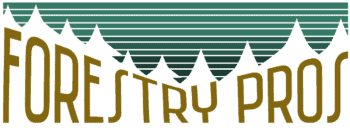- Birch vs Aspen - November 7, 2022
- How to Treat Chainsaw Rust - August 8, 2022
- Firewood Delivery: Where to Buy Firewood Online 101 - May 8, 2022
I simply can’t get enough of birch trees. They are absolutely gorgeous, and I love them so much that I have no less than a dozen of them growing around my property in Missouri. I’ve only lived here a year, and I plant more every spring!
However, I learned something recently. Did you know that it’s incredibly hard to tell the difference between birch and aspen trees? Yup. They are so similar in appearance that unless you’re up close, you may not be able to tell which is which. I’ll be the first to admit that I had no idea!
Not only that, but many ancient cultures believed that these trees were magic. They thought birch and aspen trees could drive away evil, which is why they were planted near homes and why they’re so common in landscaping today.
The good news is that there are plenty of important differences that you should be able to determine what you’re looking at if you observe closely enough. Here’s a thorough comparison of these two beautiful types of trees sprinkled with all the reasons why I love them so much!
Bottom Line Up Front
Both birch and aspen trees grow to great heights have trunks with white bark and don leaves that turn a stunning yellow in the fall. However, the differences outnumber the similarities, and these trees have very different climates, uses, lifecycles, and trunk markings.
Main Differences Between Birch vs Aspen
The main differences between birch vs aspen are:
- Birch leaves are oval-shaped with serrated edges, whereas aspen leaves are heart-shaped with scalloped edges.
- Birch tree bark peels off like paper, whereas aspen tree bark is wrapped tightly around the trunk.
- The trunks of birch trees are truly white, whereas aspen trees appear to be white with a green tint underneath.
- Birch trees can survive in partial sun, whereas aspen trees require full sun.
- Birch trees need soft soil, whereas aspen trees can survive in many types of soil.
- There are many different varieties of birch trees, whereas there are only a few different types of aspen trees.
- Birch trees grow alone, whereas aspen trees grow in clusters as part of a root system.
Birch
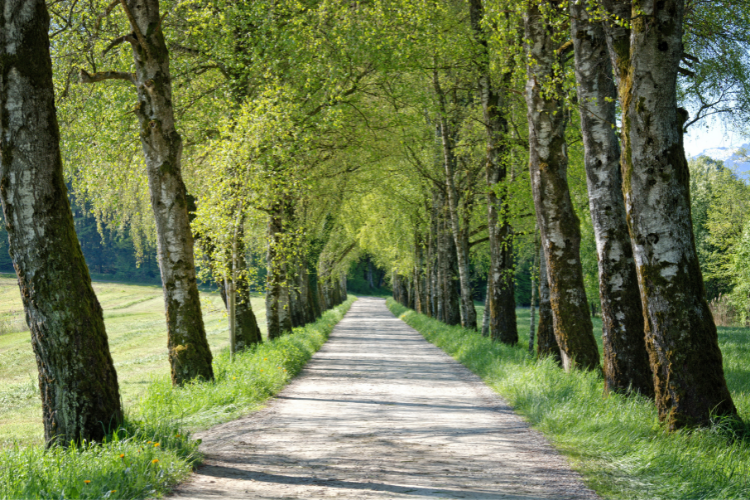
When you think of birch trees, no doubt you think of the trees with the white, papery thin bark that peels right off the trunk. And this is the most common type of birch tree, so you’re not wrong.
That’s what I visualize the most, too. That’s because it’s used in a lot of landscaping in suburban areas. Other varieties of birch are rarely planted on purpose and typically grow on their own.
Keeping in mind that there are many different kinds of birch trees, we’ll mostly be talking about the common types of birch you see the most frequently. We would be here a while if we wanted to create an exhaustive list of every birch tree.
Appearance
Birch trees are known for their white, papery bark and bright yellow fall foliage. They are frequently found with several trunks growing out of the same base. They can reach up to 70 feet in height and grow alone rather than in groups.
Leaves
Leaves can help you identify a tree, and especially when in comes to trees like oak or maple, they’re easily identifiable. I’m not the world’s premier tree expert or anything, but thanks to growing up in the country, I can usually tell the difference pretty easily. Especially when it comes to oak varieties, maple trees, and even locusts.
While there are some differences between birch and aspen leaves, it can be tough to distinguish them unless you’re looking at them side by side. Like I said, I had no idea they were so similar!
Birch leaves are oval-shaped with tapered tips and serrated edges. They’re longer and skinnier than an aspen leaf. The only problem is, you have to have a leaf to look at. If it’s winter time, this won’t help you identify the tree at all. You’ll have to look elsewhere.
Birch leaves contain a lot of veins, which give the leaf more stability and help them hold themselves up high to trap sunlight. Their shape also helps them shed water more quickly.
Trunk Markings and Bark
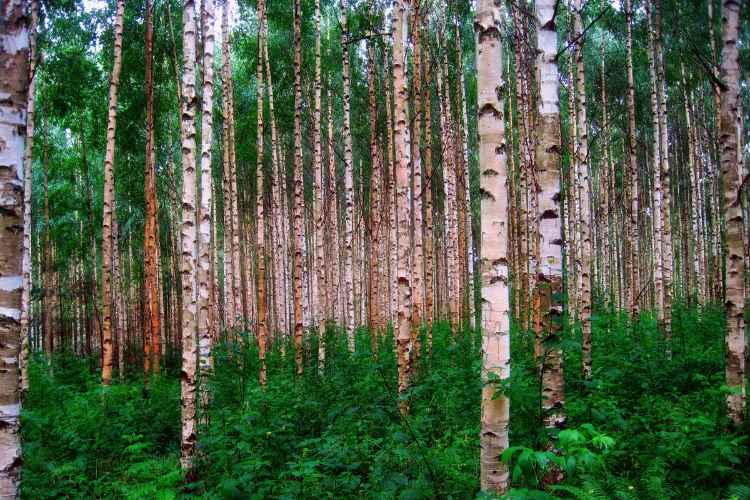
The trunk is a great way to tell the difference between birch and aspen trees. While they both appear white, birch trunks are truly white. The bark on a birch tree peels like paper, so if you’re close enough, try to peel some off.
If it comes off easily, it’s a birch. You may not even need to be close enough to touch it. If you can see it hanging off of the tree like pieces of paper, you’ll know.
Birch bark displays horizontal markings on the trunk rather than knots. This is another way you can tell birch from aspen just by looking at the trunk.
Flowers
Birch trees are capable of producing both male and female flowers, which helps accelerate the pollination process. These trees are easily pollinated and produce a wing nut shaped seed.
Cone-shapped buds form in early spring and are a deep red or purple color. By mid-summer, the buds are fully grown.
Varieties
There are nearly 60 subspecies of birch, and although birch is known for its white papery bark, some subspecies have red, black, silver, or yellow trunks.
Paper birch is one of the most well-known species. It’s commonly used in landscaping to create a woodland effect. However, other common varieties include:
- Cherry birch
- Bog birch
- Yellow birch
- Dwarf birch
- Silver birch
- Water birch
- Downy birch
- Weeping birch
- Curly birch
- River birch
While the river birch is not white, it’s still papery, and it’s my absolute favorite! These gorgeous trees share the same leaf structure as most birches, and they can easily be identified by the light brown trunks with peeling bark.
They are rarely seen with only one trunk. Most often, you’ll find them with at least 2-3 trunks growing from the same base. They’re fragile, so they don’t hold up well in windy areas, but they’re breathtaking and a great asset to any landscaping job.
Native Habitats
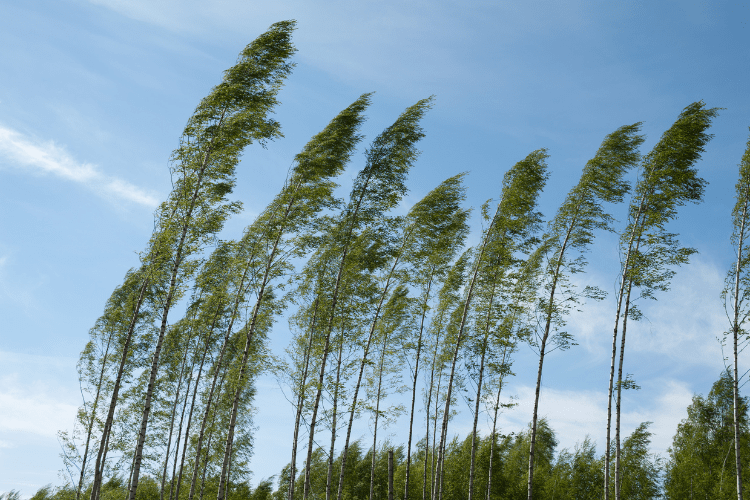
One of the easiest ways to tell the difference between birch and aspen trees is to take a look at where you are on the map. Birch trees are much more selective about where they prefer to grow than the mighty aspen.
Locations
Birch trees are usually only found in the eastern part of the United States and a select few parts of Canada. Birch trees grow alone, rather than in groups, but in a few situations, you may find several birch trees growing from the same root system. Birch trees are known for having several trunks growing from the base.
Climates
The similarities continue! Both birch and aspen prefer full sunlight. However, birch trees can grow in partial shade. They just need a lot of sunlight. This is one of the things that makes their leaves so beautiful in the afternoon sun. They shimmer and twinkle. Have I mentioned how much I love birch trees?
Birch trees have very shallow roots, so they need loosely packed soil that allows for the roots to spread outward easily. They’re not strong enough to make their way through clay or denser soils and they don’t dig deep. This is part of what makes many birch varieties so fragile.
Uses
Who loves arts and crafts? You can’t see me right now, but I’m raising my hand. That’s right. Birch bark is one of the most fabulous materials to use for arts and crafts because it’s so much like paper.
You can use it to decorate furniture, frame pictures, build scrapbooks, weave baskets, and so much more! In fact, it was often used by the ancient Egyptians to make papyrus.
Birch also has great waterproof properties, so its wood is often used to make interior trim and veneer. Interestingly, it’s highly flammable, so it makes great firewood.
Luckily for the birch, it’s also a fantastic wood to use for canoe building and it has medicinal properties. The leaves, bark, and buds have been used to treat urinary tract infections, kidney stones, joint pain, bladder stones, and more. When broken, the twigs release sap that works as an anti-inflammatory and an analgesic pain reliever.
While there’s technically no scientific evidence that this works, some people truly believe it’s magic and you can read more about it here.
Lifecycle
Birch trees live around 80 years, and because they can produce male and female flowers, they proliferate easily. Most new birch trees grow from seeds, but they also have the ability to regenerate sprouts after being cut down or burned.
Aspen
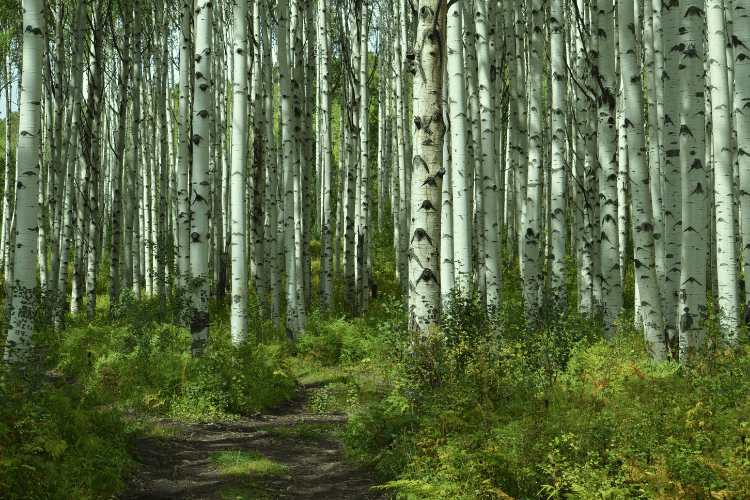
Here’s a fun fact – the aspen tree is often called the quaking aspen, because it doesn’t take much of a breeze to rustle the leaves. When a nice breeze gently rolls through, you can actually hear the leaves rustling. It can be incredibly loud! You can actually hear aspen trees before you can see them.
Appearance
Aspen trees have bark that appears white and marked with knots. They have dark green, shimmering leaves in the summer that rustle noisily in the wind and turn a bright yellow in the fall. They can also be very tall, reaching up to 80 feet, but they grow in groups rather than alone.
Leaves
Aspen leaves are shorter and fatter than birch leaves. Aspen leaves are actually quite similar to redbud leaves. Their heart-shaped appearance can be misleading. However, aspen leaves have rounded teeth around the edges while redbud leaves are smooth. And without leaves in the winter, you still won’t know.
Trunk Markings and Bark
That means it’s time to look at the trunk! Like birch, aspen trees appear to have white trunks from a distance. But did you know that the closer you get, the easier it will be to see the green tint underneath? The aspen trunk it’s truly white.
In addition, aspen trunks tend to have knots that look like eyes. This is one of the easiest ways to tell it’s an aspen tree if there are no leaves or you’re standing at a distance. The bark is wrapped around the trunk very tightly, and it doesn’t peel like paper.
Flowers
Aspen trees create the same cylindrical flower clusters as birch trees, and they’re also pollinated by the wind. However aspen trees do not have the ability to produce both male and female flowers, so they regenerate mostly from their root system.
Aspen buds look similar, but they take less time to mature. They are cone-shaped and typically dark red or brown. These buds leave scars on the stem or branch of the tree.
Varieties
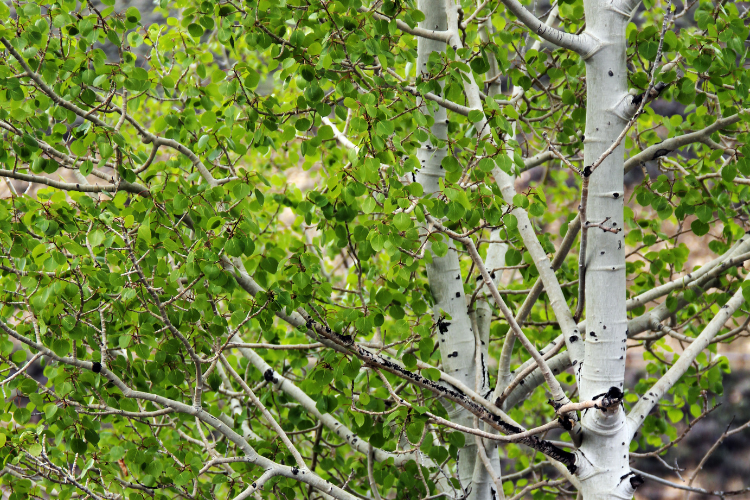
Unlike birch trees, there are only a few subspecies of aspen trees. While the quaking aspen is what we would normally visualize when we think of aspen trees, other varieties include Korean aspen, European aspen, Japanese aspen, Chinese Aspen, and bigtooth aspen.
Native Habitats
Aspen trees aren’t so picky. Geography really isn’t the best way to identify an aspen tree because you can find them all over North America.
Locations
You can find aspen trees from as far north as Canada to as far south as Mexico. They run from east to west and thrive in plenty of different geographic locations. Aspens typically grow at the edges of pine forests. Their white trunks and striking fall colors offer a glorious contrast to the nearby evergreens.
Climates
Aspen trees require full sunlight all the time. They don’t thrive in partial shade like a birch might. They need a lot of sun, and their leaves will sparkle, too. Now that I know these trees are so similar, I’m going to have to start paying attention to them in the fall!
Aspen trees are also better at tolerating many different types of soil. They’re picky about sunlight, but they’re not picky about the ground where they grow.
Uses
Aspen is most commonly used to create pulp for paper and boxes, but because it’s so lightweight, it also makes great furniture and crates. While aspen hasn’t been as widely used medicinally as birch, there are still some people who believe it has anti-inflammatory and pain-relieving properties.
Because aspen is not as flammable as other types of wood, it’s often used to make matches.
Lifecycle
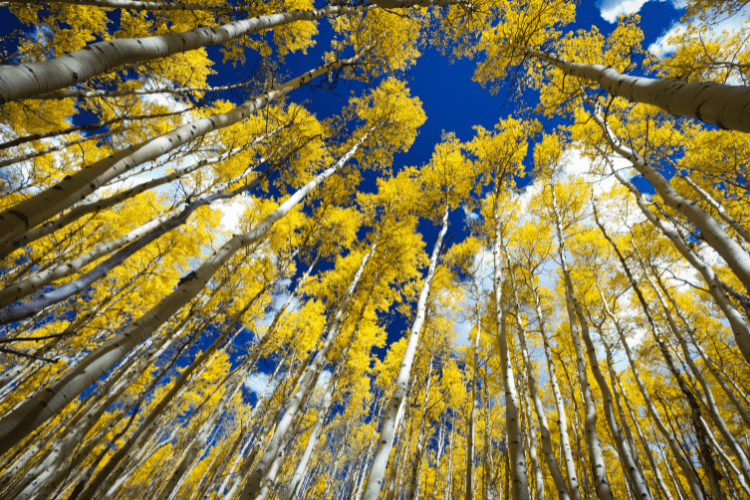
Aspen trees live to be up to 120 years old, and their root systems can live for thousands of years. The aspen is one of the oldest living organisms in the world because they are so long living.
While new birch trees grow mostly from seeds, entire forests of aspens will grow from roots, even after they’ve been burned. This root system is strong and hardy, and a single aspen doesn’t exist on its own. Instead, they are part of a larger network of trees that all share the same root system.
FAQs
Now that you know a little bit more about birch and aspen trees, let’s address some frequently asked questions.
Question: Should I Choose Birch or Aspen Trees for My Yard?
Answer: It depends on what you’re looking for and what type of climate you live in. If you want a fast-growing tree that will provide shade quickly, birch is a good choice. Aspen trees are also fast-growing, but they require full sunlight. If you live in an area with hot summers, aspen might be a better choice because it can tolerate heat better than birch.
Question: Do Aspen Trees have the Same Benefits as Birch Trees?
Answer: Yes, for the most part. Aspen trees share many of the same qualities as birch trees. They’re both fast-growing, they’re both good for paper production, and they both have medicinal properties. The main difference is that aspen trees require full sunlight, while birch trees can tolerate partial shade.
Question: Are Aspen and Birch Trees the Same Thing?
Answer: No, they’re not the same thing. Aspen and birch trees are both members of the Betulaceae family, but they’re not the same species. Aspen trees are in the Populus genus, while birch trees are in the Betula genus.
The main difference is in the leaves – aspen leaves are round, while birch leaves are more oval-shaped. Other than that, they’re very similar trees.
Question: Are Aspen and Birch Trees Good for Firewood?
Answer: Yes, both aspen and birch trees make good firewood, but for different reasons. Aspen is very easy to ignite, but it is slow burning, so you’ll get a nice long burn for a bonfire. Birch is highly flammable and it burns quickly, so while it’s easy to ignite, it won’t last very long.
Final Thoughts
I hope you and I both learned something new today! When I first discovered how similar birch and aspen trees were, I had to dig deeper.
For one, I had to answer the question, “Have I been in love with aspen trees this whole time?” When I discovered that, no, I was indeed looking at birch trees, then I had to answer the question, “Will I love aspen trees as much as I love birch trees?”
The answer is a resounding yes! They are both strikingly beautiful and have quite a few similarities, but their differences are quite interesting. While birch trees work well in landscaping and have a wide variety of subspecies from which to choose, aspen trees aren’t as picky about the soil or the climate.
If you’re thinking about planting either one of these, you can go wrong. You’ll enjoy the sweet rustling of the aspen leaves in a breeze or the fun papery bark of the birch that you can use for arts and crafts. Both offer plenty of bright shimmering leaves throughout the spring, summer, and fall seasons and gorgeous bare trunks in the winter.
